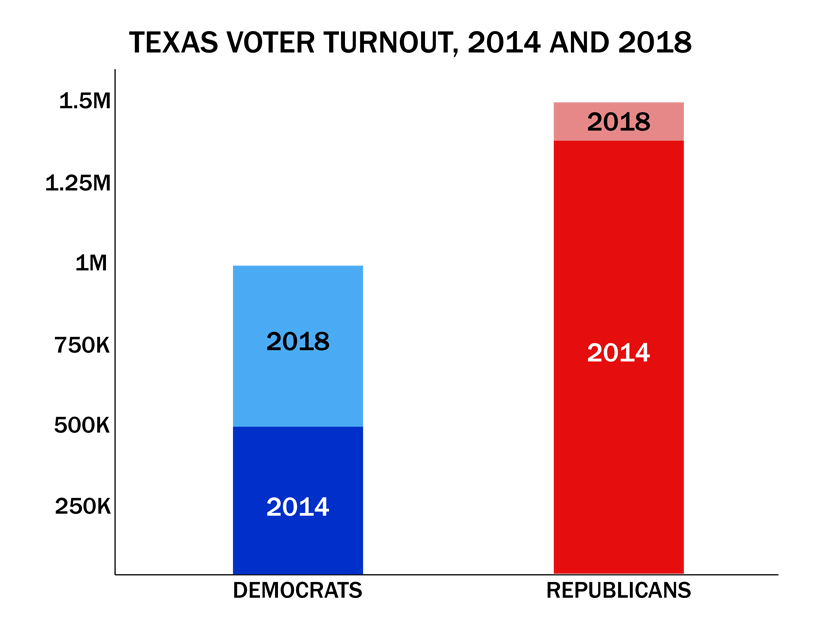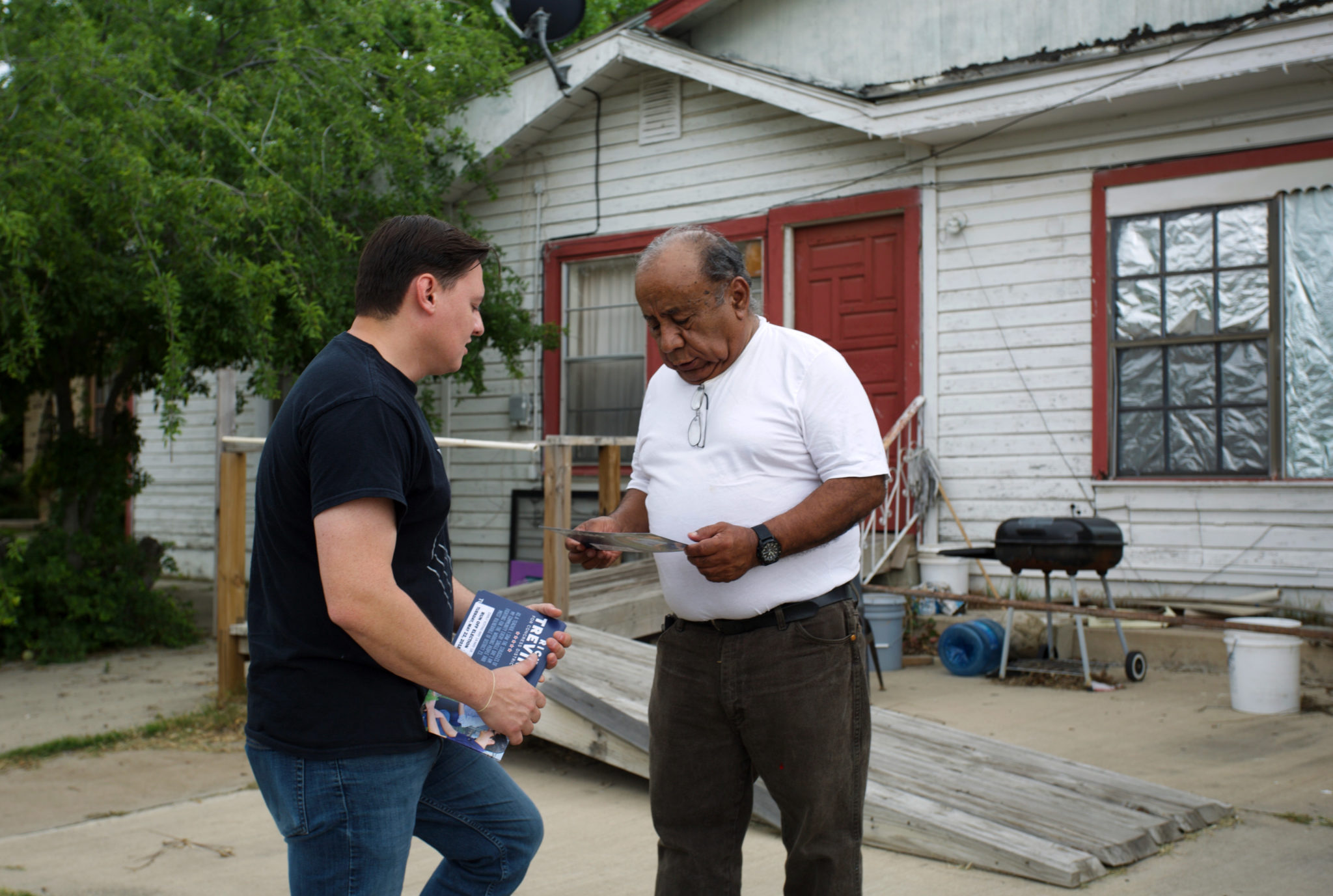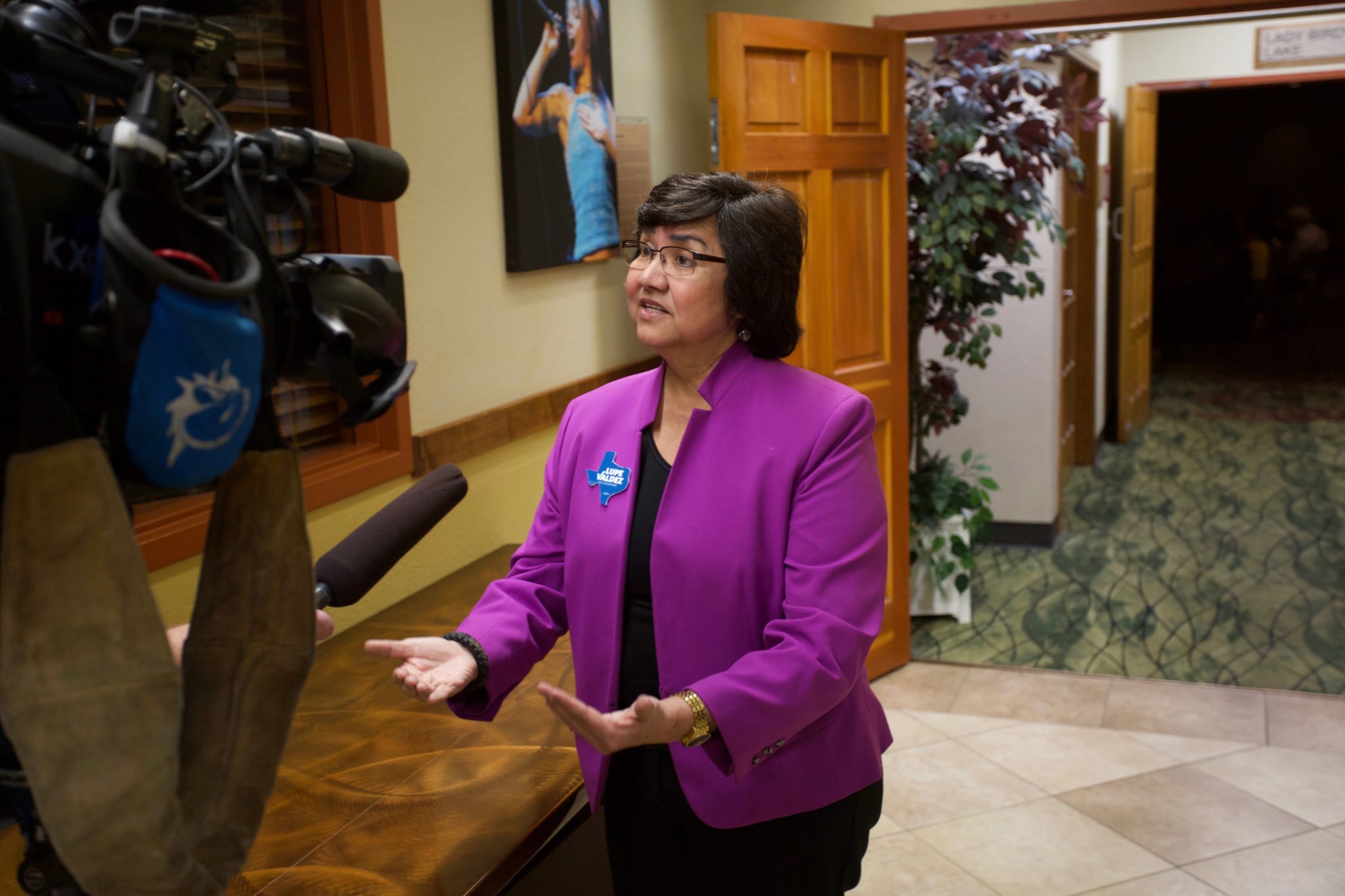
The All-or-Nothing ‘Turning Texas Blue’ Narrative Needs to Be Retired
After the Texas primaries, it’s worth asking if the phrase and its variations are warping how we think about Texas politics.

Above: Wendy Davis speaks at her gubernatorial campaign announcement October 3, 2013, in Haltom City.
Is Texas going to turn blue in 2018? Will the Blue Wave rend us asunder? Will the state wake up on the morning of November 7 looking like Tobias Fünke? What is our ETA to TTB?
When I was first exposed to the blue-off — the rhythmic, two-decade-long debate about the likelihood and timing of Texas Turning Blue, which hits heights in election years and fades the year after when it inevitably doesn’t happen — I took it at face value. I accepted the place of that key phrase in the discourse — yes, Texas could Turn Blue, or no, Texas does not appear to be Turning Blue, as if in observing state politics we were monitoring a patient suffering from hypothermia.
Over the course of the next couple hundred times I heard the phrase, it sunk in that the words don’t actually mean anything, though it still seemed like understandable shorthand. But it’s worth asking now, after the events of the Texas primaries, if the phrase and its variations are warping how we think about Texas politics and ought to be retired.
Last month, political observers took note of extraordinary early voting numbers from the state’s 15 most-populous counties. Most of those counties are Democratic strongholds, but they rarely turn out in the way Democrats would like. Usually, many more people in those counties vote in the Republican primary than the Democratic one, but this year many more Ds than Rs voted in the two weeks prior to Election Day.
That caught the attention of the national media, for the simple reason that TTB is an all-or-nothing proposition. People watching Texas from afar are naturally not very interested in the balance of power in the Legislature, or county government. They’re interested first in whether Texas could flip in a presidential race and, secondly, whether they can be rid of Ted Cruz. So when more Democratic ballots were cast than Republican ones in the largest counties, many read that as evidence that a Democrat could win a statewide race in November, even though the link between the two is pretty specious and at any rate Texas has open primaries. (I mostly vote in the Republican primary, and a lot of people switch at will between the two depending on what’s going on in their district.)
But on election night, the statewide results, from across all 254 counties, were quite different — because of course they were. In the end, there were still more Republican ballots, 1.54 million, than Democratic ballots, 1.04 million. Some observers, hyped on the foggy narrative that lauded the early voting turnout, decided that the results were a dud and lost interest, because the numbers no longer indicated that a statewide election could be won. One national forecaster, Harry Enten, wrote that the primary results were a disappointment because they were comparable to 2006, when the party didn’t win any statewide elections. But Texas Democrats don’t remember that year as a disappointment — they made extraordinary headway in the state House, part of an effort that almost won a majority in 2008.

The Blue Wave was real, and then it wasn’t, in the course of about a week. Stranger still, the made-up national story arc seemed to influence in-state coverage as well. Even though Democratic turnout was better than in any midterm primary since 2002, and more than than double 2014, commentators have consistently described the night as at least a mild disappointment, where the Democrats “fell short” of a goal that had been imagined for them.
The thing is, the way the state goes on the electoral college map doesn’t mean very much at all for the way Texas is governed. And while it’s possible that the party jumps back to life with the shock of winning one or two statewide elections — that there will be a proof of concept, and then everyone suddenly gets serious — it’s more likely that things change slowly, over an extended period of time, and that small gains and positive signs feed bigger gambits. What’s most important in the long run is the overall composition and strength of the Texas Democratic Party at the local and state level.
In that light, the fact that Democratic turnout doubled in urban counties while Republican turnout stayed essentially flat is significant. There are quite a few winnable legislative districts around those cities. The whole ballgame for the party is getting people to vote and to make a habit of voting. Trump is helping them do that — the trick now is to get it to stick, which it most certainly did not after the elections of 2006 and 2008.
“It can be hard to know to whether our bad terminology comes from our bad thinking about politics or vice versa.”
When Republicans started to take over, they gained ground very slowly, often needed luck, and had plenty of setbacks along the way. The first Republican governor of the 20th century was Bill Clements, who won 50 percent of the vote in 1978 to his opponent’s 49 percent. The Republican candidate in 1974 won only 31 percent of the vote, about 8 percentage points worse than Wendy Davis. In the state’s two U.S. Senate elections before Republican John Tower won in 1962, GOP candidates won 24 and 41 percent of the vote. Republican leaders bided their time, and they got a little bit better at politics, as the national circumstances changed. Four decades passed between when Tower won and the Republicans finally took the Texas House in 2003.
American political discourse is hung on very broad and stupid concepts, and it can be hard to know to whether our bad terminology comes from our bad thinking about politics or vice versa. The idea of the nation as being composed of “red states” and “blue states” clouds thinking, as does the way we describe candidates as “winning” or “losing” demographic groups.
The idea of Texas Turning Blue embraces both kinds of that sloppy majoritarianism — that demographic groups will “flip” the state, and the state will become something other than what it is. We live in a majoritarian system, of course. But politics is about margins and incremental advantage. When possible, we ought to use language that reflects that, and shun that which doesn’t.


